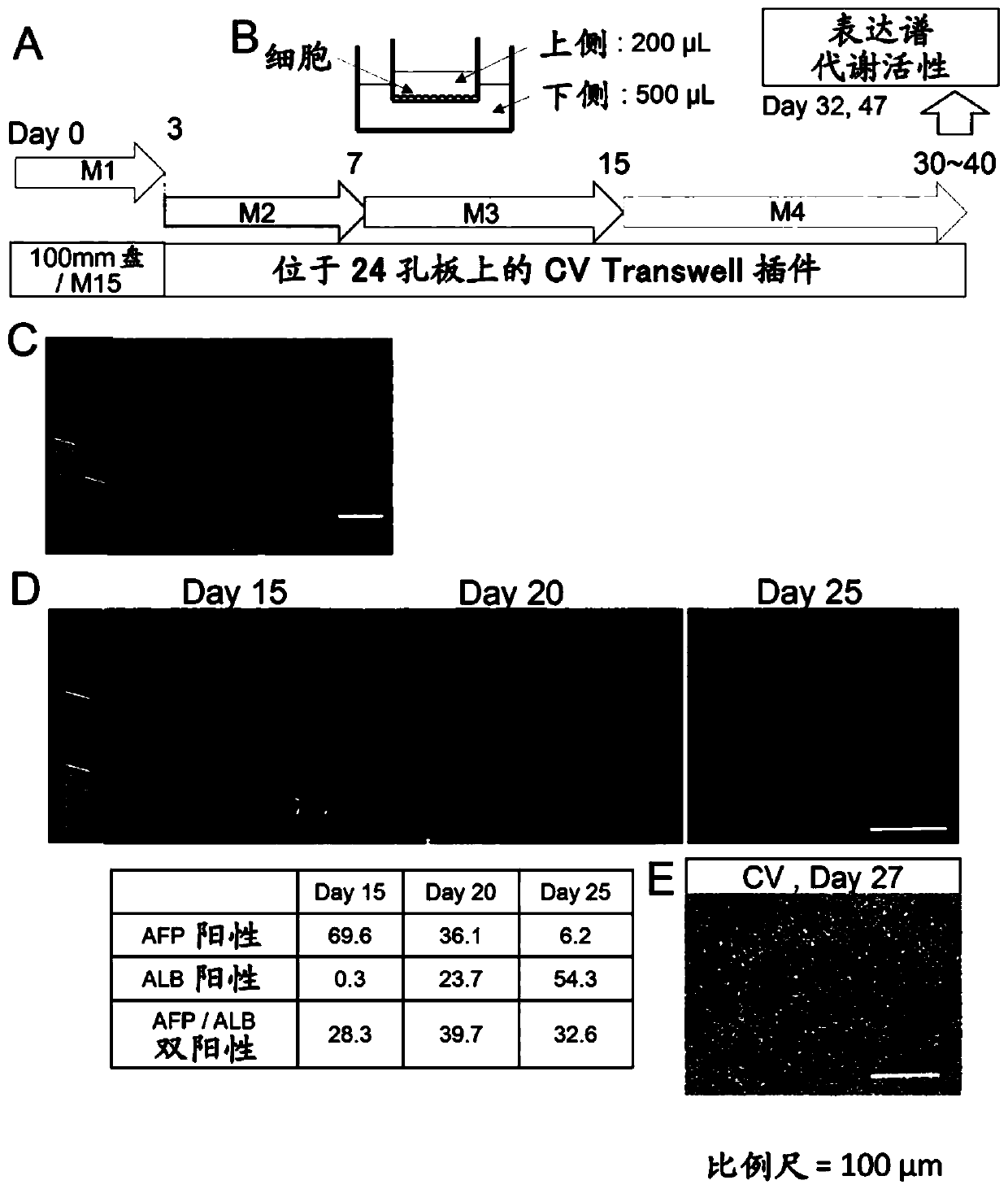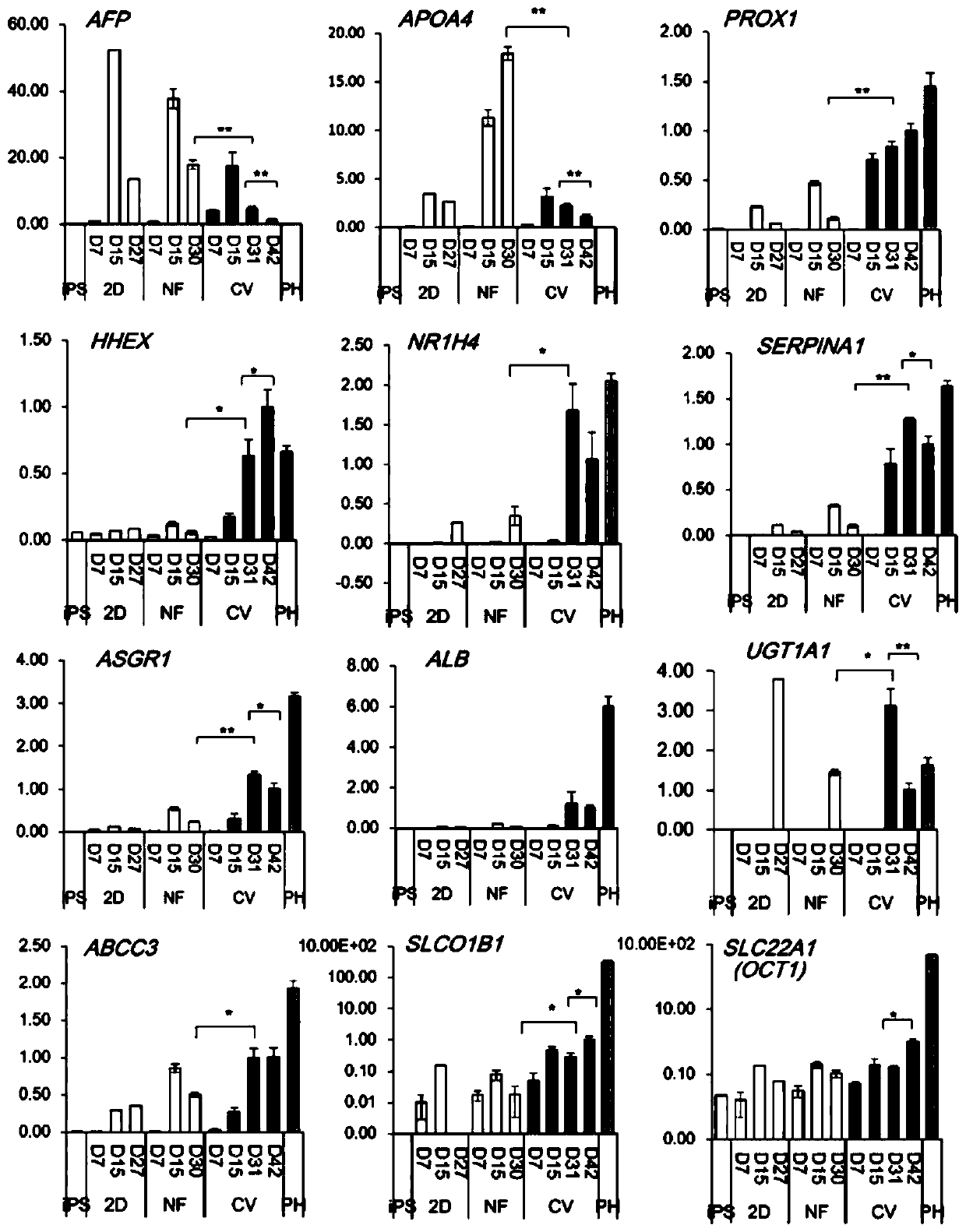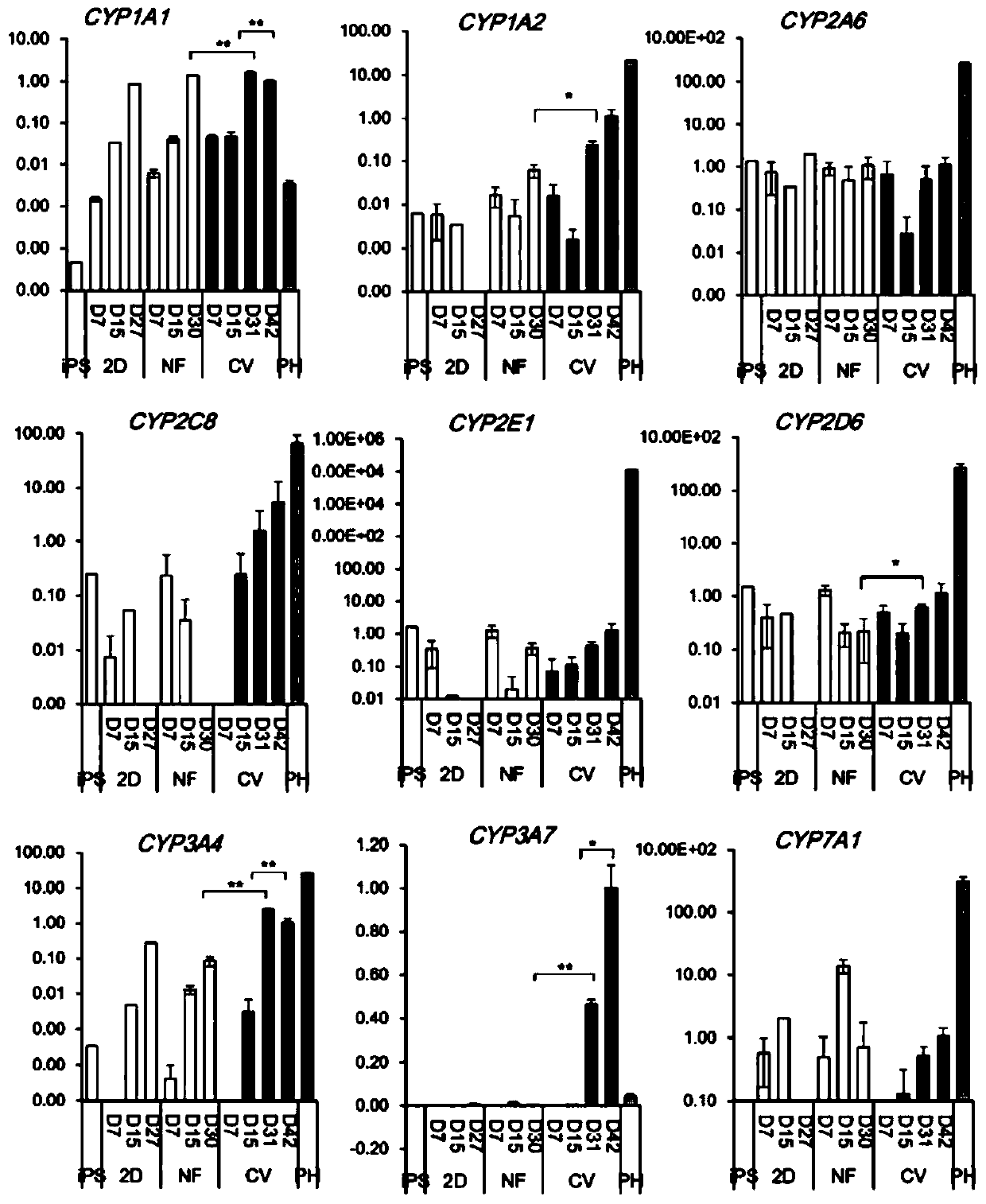Method for inducing differentiation of pluripotent stem cells into hepatocytes
A technology of pluripotent stem cells and hepatocytes, applied in the field of induction of differentiation from pluripotent stem cells to hepatocytes, can solve the problems of large batch differences, difficulty in correctly evaluating the toxicity of human liver cells, and supply limitations of liver cells
- Summary
- Abstract
- Description
- Claims
- Application Information
AI Technical Summary
Problems solved by technology
Method used
Image
Examples
Embodiment
[0105] Hereinafter, the present invention will be described in more detail by way of examples, but the present invention is not limited to these examples.
[0106] (A) Materials and Methods
[0107] (1) Human iPS cell line
[0108] The undifferentiated human iPS cell line ChiPS18 cells (Asplund et al., 2015, Stem Cell Rev. Reports) were treated with AK02 StemFit medium (Ajinomoto) on a cell culture dish (Invitrogen) previously coated with Synthemax (registered trademark) II. )maintain. To deplete methionine, ChiPS18 cells were cultured with StemFit complete medium (Ajinomoto) or KA01 medium lacking methionine (Ajinomoto).
[0109] (2) Preparation of Collagen Vitrigel membrane chamber
[0110] The collagen xerogel film was manufactured by Kanto Chemical Co., Ltd. (Tokyo, Japan). Briefly, Collagen Vitrigel membranes are as previously reported (Oshikata-Miyazaki and Takezawa, 2016, Cytotechnology 68, 1801-1811; Yamaguchi et al., 2013, Toxicol. Sci. 135, 347-355; Yamaguchi et ...
PUM
 Login to View More
Login to View More Abstract
Description
Claims
Application Information
 Login to View More
Login to View More - R&D
- Intellectual Property
- Life Sciences
- Materials
- Tech Scout
- Unparalleled Data Quality
- Higher Quality Content
- 60% Fewer Hallucinations
Browse by: Latest US Patents, China's latest patents, Technical Efficacy Thesaurus, Application Domain, Technology Topic, Popular Technical Reports.
© 2025 PatSnap. All rights reserved.Legal|Privacy policy|Modern Slavery Act Transparency Statement|Sitemap|About US| Contact US: help@patsnap.com



